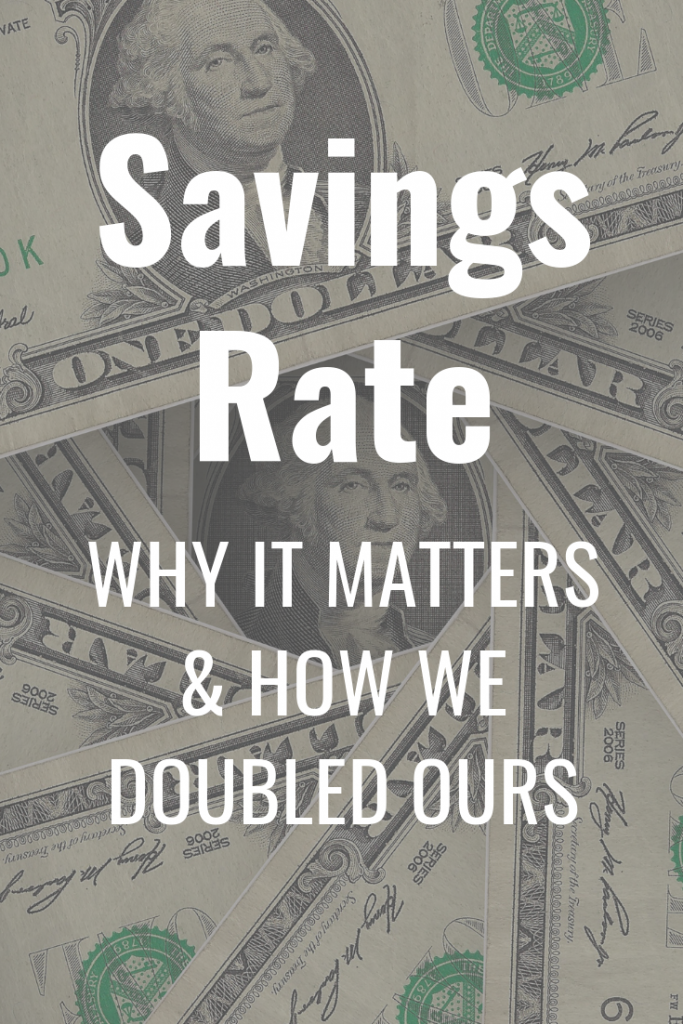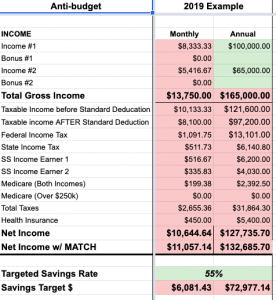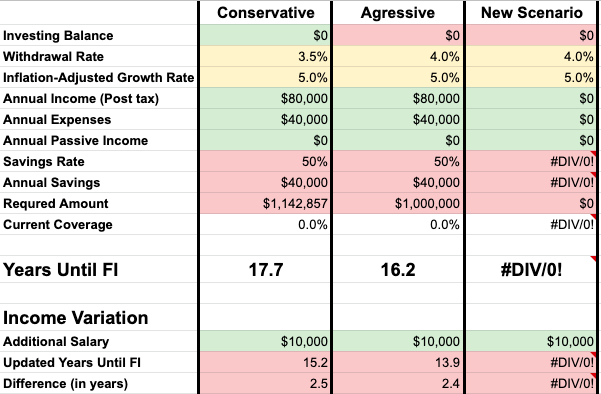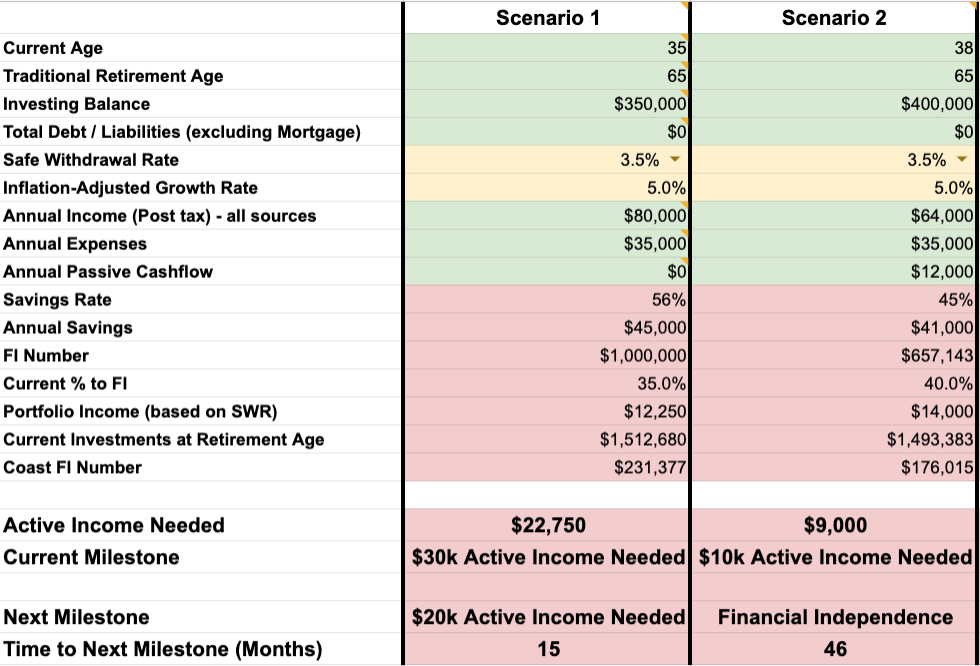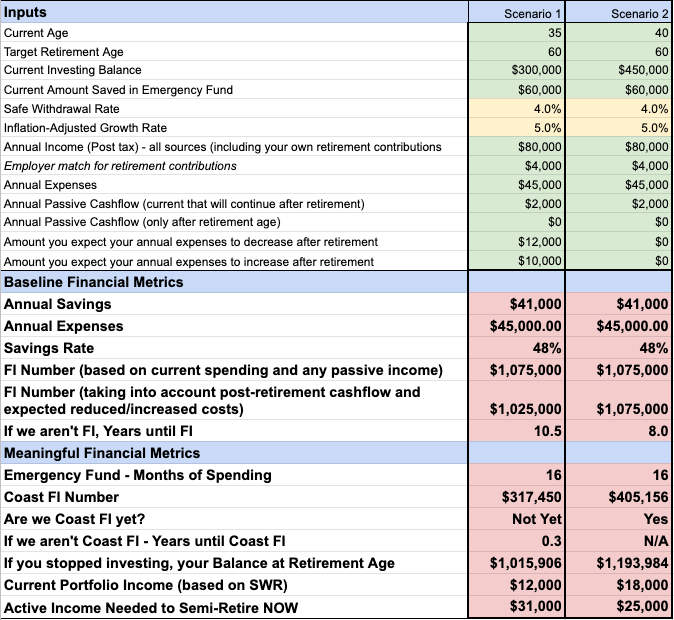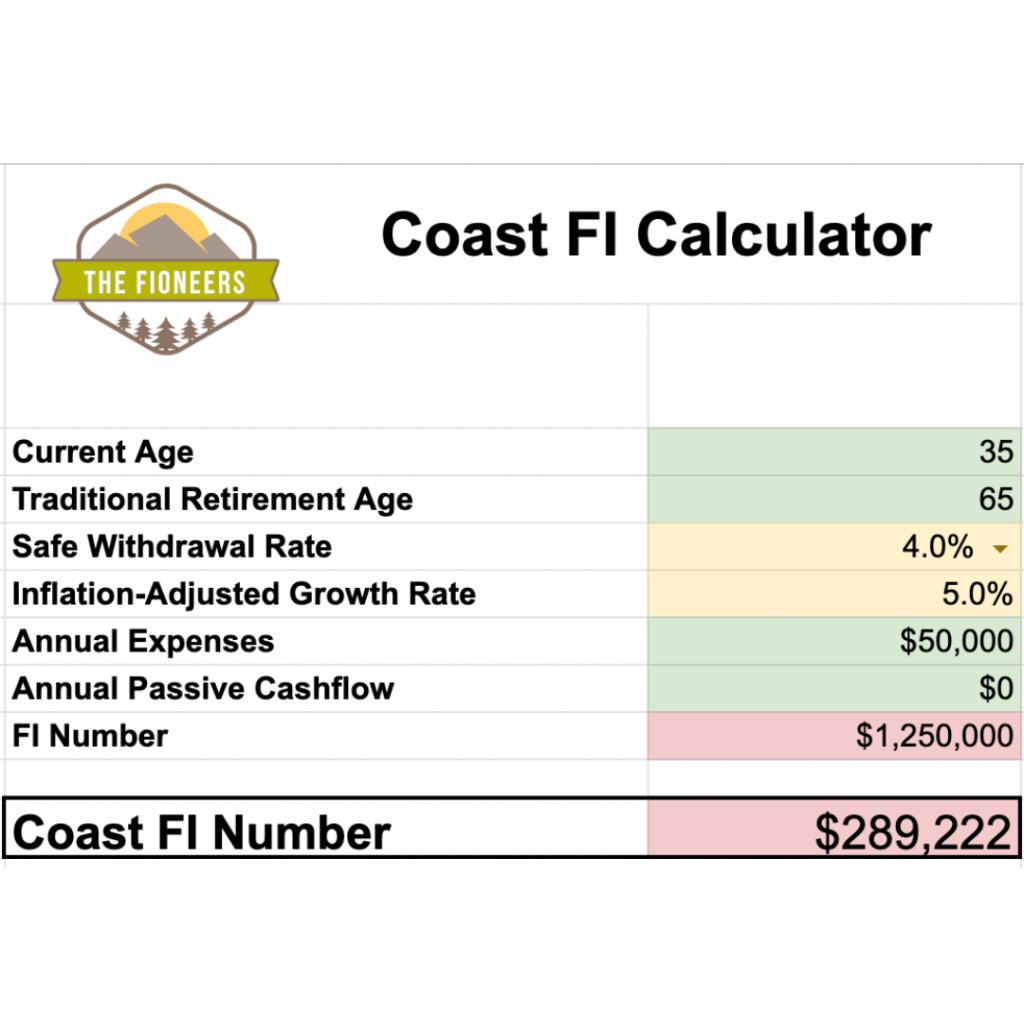Everyone in the financial independence (FI) community loves to talk about their “number.”
It’s supposed to be the holy grail — the target that unlocks your freedom.
Over the past 15 years of being immersed in this space, I’ve met countless people who’ve proudly calculated and announced their FI number. I’ve read thousands of articles, listened to hundreds of hours of podcasts, and watched many people anchor their entire life plan to a single dollar amount.
And there’s a harsh truth almost no one has the guts to admit:
Your FI number is probably misleading you.
It’s something we all sort of sense, but rarely say out loud. Let’s explore why that is and consider how we might approach it differently.
The Problem with Your FI Number
Most people calculate their FI number using a simple formula:
Take your annual expenses and divide by your safe withdrawal rate (often 4%).
For example, if you spend $60,000 per year and use a 4% withdrawal rate, your FI number becomes $1.5 million.
This number quickly becomes your north star. It’s the destination you pour all your energy into reaching. For many, it becomes the sole focus for 10-20 years while aggressively building wealth.
But what if your FI number is more of a mirage than a milestone? Here are four reasons it might actually be leading you down the wrong path.
1. It Assumes Life Won’t Change
A single FI number assumes that your life — and your expenses — will stay the same forever.
This couldn’t be further from reality.
I’ve experienced this firsthand. Early on in our FI journey, my husband and I calculated our FI number based on our then-current spending. We thought we were being diligent and realistic.
Then life changed. Twice in huge ways.
After I went back to work part-time due to a mental health crisis, we inadvertently reduced our spending by $17,000 simply by eliminating toxic spending triggers.
Later, we moved to New Hampshire and purchased a home outright, eliminating our mortgage payment. Just one year prior, this move wasn’t even on our radar.

Our spending changed dramatically — and so did our “number.” A static target simply can’t capture the fluid, evolving nature of life.
2. It Encourages Deferring Life Until You Hit a Number
The second danger is even more insidious: it causes you to defer living your life until you hit your target.
It’s the classic, “Once I hit this number, then I’ll…” syndrome.
Without realizing it, a number that was supposed to symbolize hope and freedom becomes the very thing keeping you from living your life. It becomes an excuse to delay making meaningful lifestyle changes. Sometimes, it even becomes a crutch that lets you avoid difficult decisions.
Worse, it can lead you to strip away things that bring you joy — all in the name of speeding up your path to FI.
3. It Creates All-or-Nothing Thinking
Your FI number also reinforces the idea that financial independence is binary: you’re either financially independent or you’re not.
But life doesn’t work like that.
Imagine someone with a $2 million FI goal. After years of disciplined saving, they finally reach $2,012,000. Then the market drops by 1%, bringing their portfolio back to $1,992,000.
Are they suddenly not financially independent anymore? Did their life change overnight?
Of course not. Financial freedom exists on a spectrum. As your wealth grows, your options expand gradually — not in one dramatic flip of a switch.
It’s also worth noting that someone with $1.5 million likely has almost the same meaningful options as someone with $2 million.
4. It Turns Money Into the End Goal
Finally, hyperfixating on your FI number makes money the end goal. The entire journey becomes about chasing a net worth target, rather than building the life you actually want.
But the point of financial independence isn’t to be rich. It’s to be free.
Imagine how different your life might look if you spent as much time designing your ideal lifestyle as you did crunching spreadsheets.
So What Should You Do Instead?
If obsessing over a rigid FI number leads you astray, should you abandon it altogether?
Not necessarily. Your FI number can still be a helpful tool — if you reframe how you use it. Here are three ways to approach it differently.
1. Think in Ranges, Not a Single Number
Instead of aiming for a fixed target, try thinking in ranges.
For example:
- Calculate three different scenarios: your bare minimum FI number, your most likely case, and a stretch goal.
- Or use different safe withdrawal rates (say 4% and 5%) to establish a range.
If you plan to spend $60,000 annually, that gives you a range from $1.2 million to $1.5 million.
This subtle shift reduces pressure and acknowledges that life is dynamic. It keeps you from getting locked into a specific number, and invites you to explore what “enough” really means as you get closer.
2. Celebrate FI Milestones
Instead of fixating on full financial independence, celebrate milestones along the way.
Maybe it’s paying off debt, reaching Coast FI, building up FU money, or funding a mini-retirement.
When you embrace these milestones, your journey becomes a series of meaningful achievements — not a slog toward a distant goal.
Years ago, we decided to focus on making small, incremental changes so that reaching full FI would just feel like another day. It’s a mindset shift that’s brought so much more joy into our lives.
3. Use It as a Compass, Not a Destination
Finally, treat your FI number as a compass, not a finish line.

Let it guide your decisions. When opportunities come up, like taking a lower-paying but more fulfilling job, you can evaluate how that impacts your trajectory and whether the trade-offs are worth it.
This approach gives you flexibility to take detours, try new things, and still trust that you’re headed in the right direction.
Focus on Freedom Now
Instead of obsessing over a rigid FI target, focus on the freedom and flexibility you can create today.
Build a life that’s rich in experiences, relationships, and meaning, not just your investment accounts.
What about you? How do you think about your FI number? Have you ever felt stuck chasing it? I’d love to hear your thoughts in the comments.





